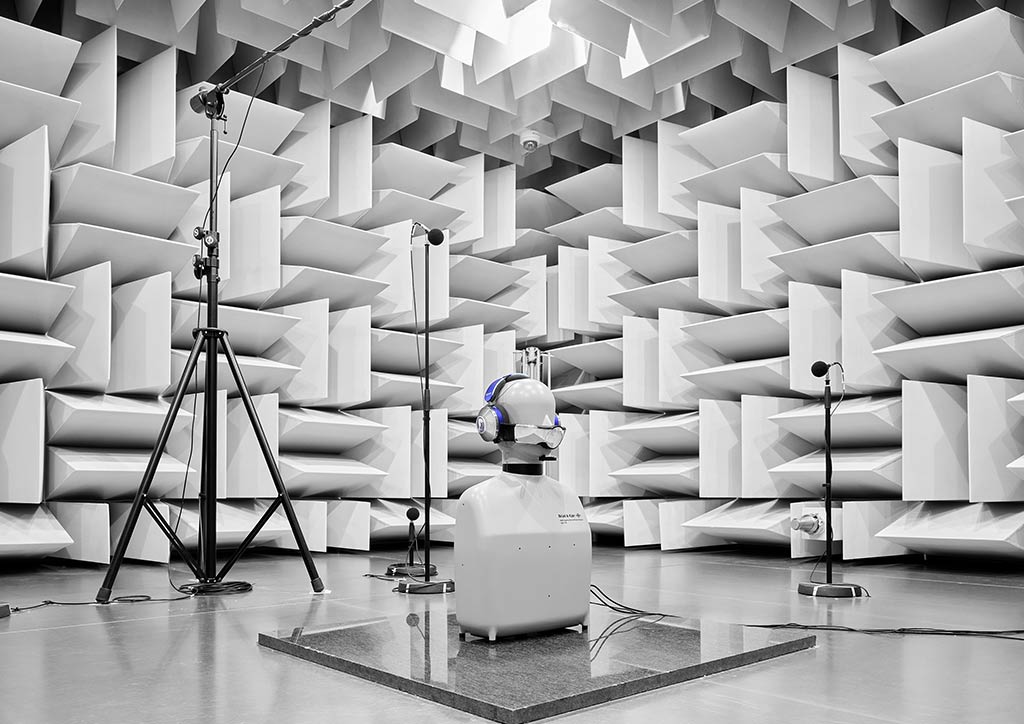The Dyson Zone apparently captures city pollution including gas, allergens, and particulate matter.
Today, Jake Dyson has unveiled their company’s air-purifying headphones and their first step into wearable technology.
READ ALSO: Just Right: Going Back To The UK And Netherlands? Here Are 4 Boutique Hotels To Check Out
The Dyson Zone is a set of noise canceling, high fidelity over-ear headphones which simultaneously deliver immersive sound to the ears, and purified airflow to the nose and mouth.

A result of over a decade of air quality research and development, the air purifying headphones simultaneously tackle the urban issues of air quality and noise pollution.
“Air pollution is a global problem,” Dyson says. “It affects us everywhere we go. In our homes, at school, at work and as we travel, whether on foot, on a bike or by public or private transport.”
As he explains, the earphones purifies the air you breathe on the move.

“Unlike face masks, it delivers a plume of fresh air without touching your face, using high-performance filters and two miniaturized air pumps,” Dyson says. “After six years in development, we’re excited to deliver pure air and pure audio, anywhere.”
Airflow expert
The Dyson Zone air-purifying headphones are born of Dyson’s 30 years of expertise in airflow, filtration and motors technologies and deep understanding of indoor and outdoor air quality.
The compressors in each earcup draw air through the dual-layer filters and project two streams of purified air to the wearer’s nose and mouth, channeled through the non-contact visor. Sculpted returns on the visor ensure purified airflow is kept near to the nose and mouth and diluted as little as possible by external crosswinds.

It delivers immersive audio and relief from unwanted city noise thanks to advanced active noise canceling (ANC), low distortion and a neutral frequency response, to faithfully replicate music or audio as the creator intended.
Originally a snorkel-like clean air mouthpiece paired with a backpack to hold the motor and inner workings, the Dyson Zone air-purifying headphones evolved dramatically over its six years in development.
More than 500 prototypes saw one motor initially placed at the nape become two compressors, one in each ear-cup and the evolution of the snorkel mouthpiece into an effective, contact-free visor that delivers clean air without full-face contact—a brand-new clean air delivery mechanism.

Developing a non-contact solution was a must for Dyson engineers, to avoid the discomfort and irritation often associated with full-contact alternatives. The visor, therefore, was a critical element.
Airflow pathways as well as the visor’s design are central to delivering pure air. The geometries of the visor and the visor returns, alongside the central mesh that diffuses the two jets of airflow, ensure that the purified air exiting the filters is effectively delivered to the nose and mouth in crosswinds, and for the wearer’s specific facial shape.
Going beyond existing testing methods, Dyson engineers use a breathing mannequin fitted with medical-grade mechanical lungs and sensing equipment, which “inhales” pollution replicating human breathing patterns in a controlled chamber.

They then measure the pollution level within the nose and throat to determine the filtration efficacy of those particles which would otherwise end up in Frank’s artificial lung.
Precision-engineered compressors within the earcups draw air through the dual-layer filters, intelligently designed to fit within the considerable space constraints of a headphone. The negatively charged electrostatic filter media captures ultrafine particles such as allergens, and particles from sources such as brake dust, industry combustion and construction whilst a potassium-enriched carbon layer captures city gas pollutants like NO2 and SO2.
The compressor channels the purified air to the wearer’s nose and mouth via the contact-free visor.

Comfort points
Taking inspiration from the shape and design of a horse’s saddle, the Dyson Zone is engineered to distribute weight over the sides of the head, rather than on the top. A saddle typically curves over the horse’s spine distributing the load through contact with the areas left and right of the backbone—a format used for the central cushion on the headband.
The development of the ear cushions is important for three reasons: comfort, on-head stability and passive attenuation.
Foam is an obvious choice for ear cushions but Dyson engineers dug deep into the makeup of different foams to choose the most suitable material based on density, rate of compression and spring-back rate—all of which change the way pressure translates onto the head.
When choosing the optimal foam for the ear and headband cushions, it was important to balance the comfort it provides, its stability when molded to the ear, but also the acoustic benefit it provides.
Molding around the ear increases the size of the contact points providing better sealing—and inhibiting additional urban noise entering the ear. The cushion is purposefully flatter than conventional ear cushions for both attenuation and comfort, and the cushions are angled in line with the angle of the ear on the head for optimal comfort.
These air-purifying headphones have been engineered by teams across the UK, Singapore, Malaysia and China, with a particular focus on software on our South East Asia campuses.

The Dyson Zone air-purifying headphones will be available from Fall 2022. Timings will vary by geography.





